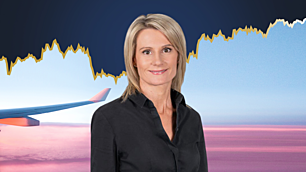The Upside Down world of Stranger Things can help us make sense of markets
You may have seen the hugely successful Netflix series, Stranger Things. If you haven't, here's a bastardised rundown.
It's set in 1980s Hawkins, a deliberately bland place where nothing much happens. Picture any forgotten town in the rural United States.
In a parallel universe, though, is 'The Upside Down' - a nightmarish mirror image of Hawkins where all kinds of monsters reside.
See below graphic:

These two worlds, while separate, are inexorably linked. For what happens in one world translates to the other. Sometimes they interact to the benefit of the show's protagonists, sometimes not.
Markets are like this.
It would all be very simple if markets dovetailed news headlines. When the media coverage is favourable, the stock responds in time and vice versa. Unfortunately, it's not that simple.
In the world of investing, good news can be bad news. But good news can still be good news. In the same way, bad news can be good news. And, yes, bad news can be just that - bad news.
Feeling discombobulated? Let's fix that, with the help of Tom Stevenson, investment director at Fidelity International.
The good news (of the good sort) is that there is method to this madness.
On one level, markets are simple. You have buyers and sellers. They trade at an equilibrium price - the point at which supply and demand curves intersect.
But those curves don't move on news alone. Rather, they move left and right based on news relative to investors' expectations.
"It’s always been the case that the main driver of an investment in the short-term is not what happens but how that reality compares with expectations," says Stevenson.
"Because of this, a share can enjoy a big bounce on the day a company announces poor results. If the market expected something even worse, the announcement might prompt a relief rally. Equally, a decent set of numbers can send a share price into reverse if investors had hoped for something even better," he adds.
Take Qantas' (ASX: ASX: QAN) half year results.

It posted a profit of $1.43 billion, with consumers returning to travel following COVID lockdowns.
But the stock sold off about 8%. Why? The market expected profit of $1.45 billion. Granted, there was probably some profit taking from investors, but you get the point.
These expectations can be shaped to some extent by company management.
"It is usual during earnings season for a relatively high proportion of companies to beat analysts’ forecasts," says Stevenson.
"It just means that their investor relations departments have done a good job of managing down expectations. You should assume that 70% of companies will announce figures ahead of the consensus and worry if it’s much less than this."
In recent years, however, there's been a new mediator in the news - stock interplay.
The Fed Put
While central banks used to make up the mise-en-scène of markets, they have become the star performers of the past 15 years.
"The importance of the rate-setters really took off in response to the financial crisis of 2008," says Stevenson.
"[Investors] came to realise that the Fed could be relied on to respond, Pavlov-style, to a slowing economy, gummed up financial plumbing or just simply a falling stock market."
It got to the point where markets not just hoped, but expected, the Fed to bail it out when things went pear shaped. This came to be know as the "Fed Put".
"For ten years from 2009 to 2019 this Fed Put meant bad news was invariably good for markets," says Stevenson.
"Sluggish growth and rolling crises in Eurozone sovereign debt or the Chinese currency or a negative shock such as Brexit provided central banks with the cover to keep interest rates on the floor. If you owned assets or needed to borrow money you were happy. If you wanted to generate an income, you were rather less so."
Next up, a pandemic
Then along came the COVID-19 pandemic, which Stevenson says turned the 'bad news is good' narrative on its head.
"Lockdowns and fiscal stimulus respectively crimped supply and boosted demand in the economy," says Stevenson.
"Unsurprisingly, inflation started to take off. The invasion of Ukraine a year ago tomorrow merely poured fuel on an already smouldering fire."
All this led to one thing - inflation.
Where we are today
Right now, good news is once again bad news. A good GDP print, hot labour market reports or strong retail sales growth is bad news because this - it's assumed - will further drive inflation and central banks will respond with rate hikes.
So, what next for the upside down world of markets?
We've had bad news for some time now, and Stevenson believes this will shift into a good-good dynamic, where the market, economy and corporate earnings become better aligned.
"The good news about this excess of good news, if that makes sense, is that the October low should now hold. The earnings recession could be milder than feared this year and the debate about whether we should expect a soft or a hard landing may be moot."
Never miss an insight
Enjoy this wire? Hit the ‘like’ button to let us know. Stay up to date with content like this by hitting the ‘follow’ button below and you’ll be notified every time we post a wire.
Not already a Livewire member? Sign up today to get free access to investment ideas and strategies from Australia’s leading investors.
1 stock mentioned
1 contributor mentioned

